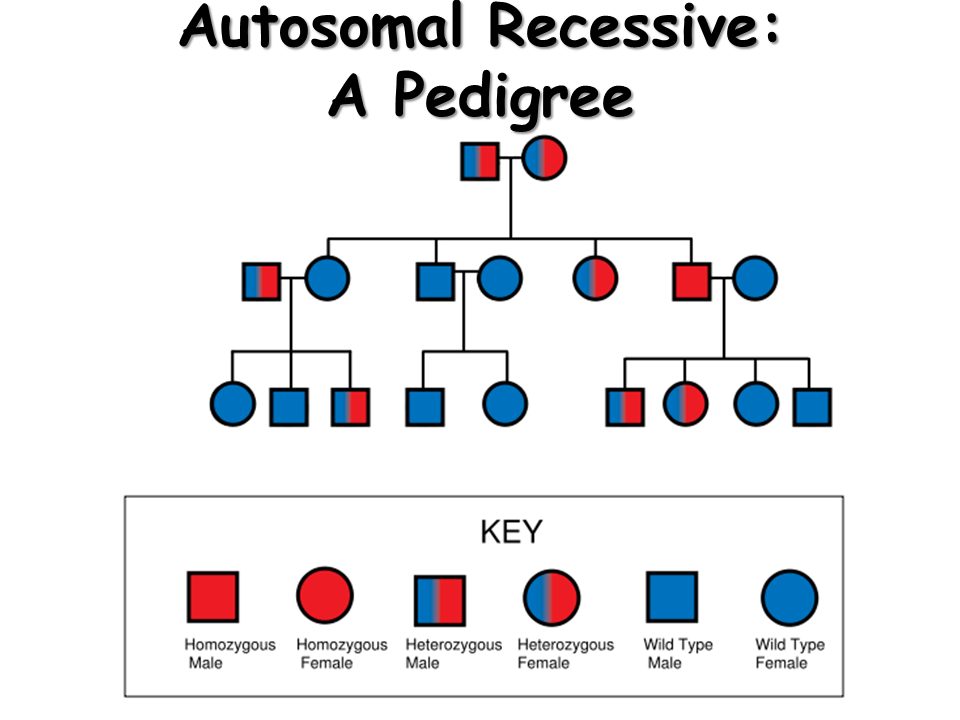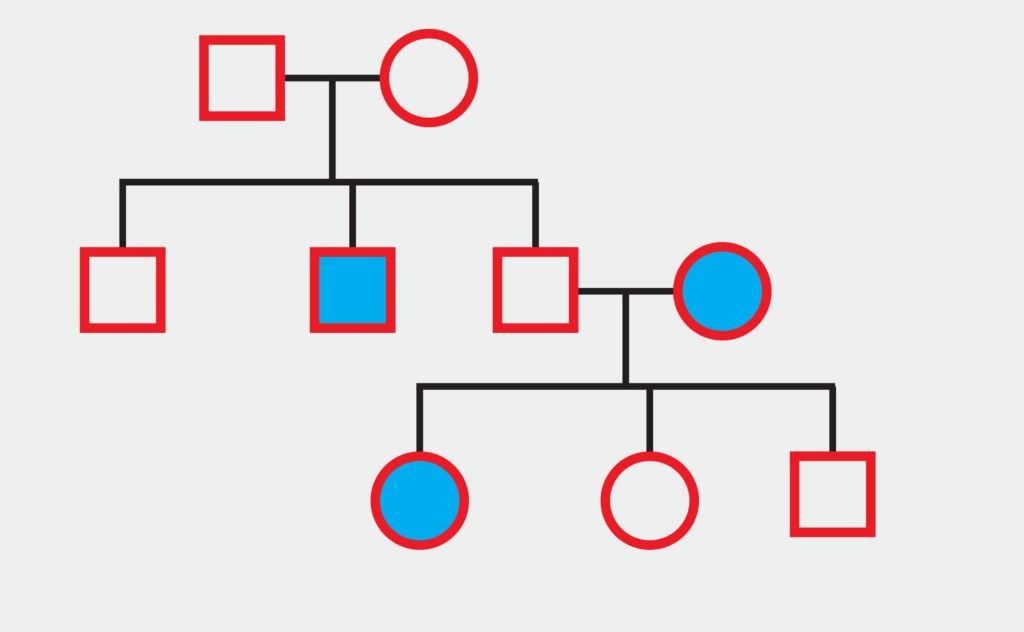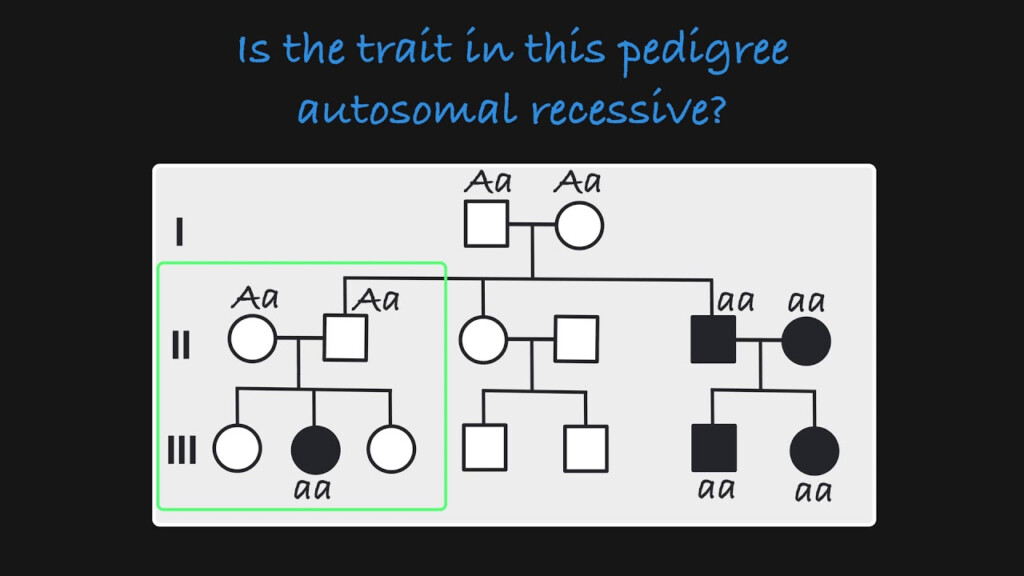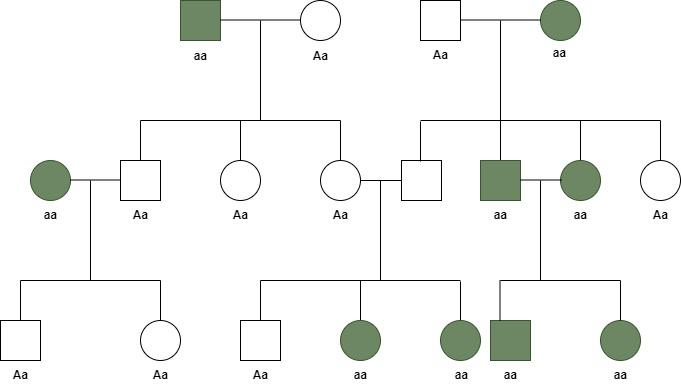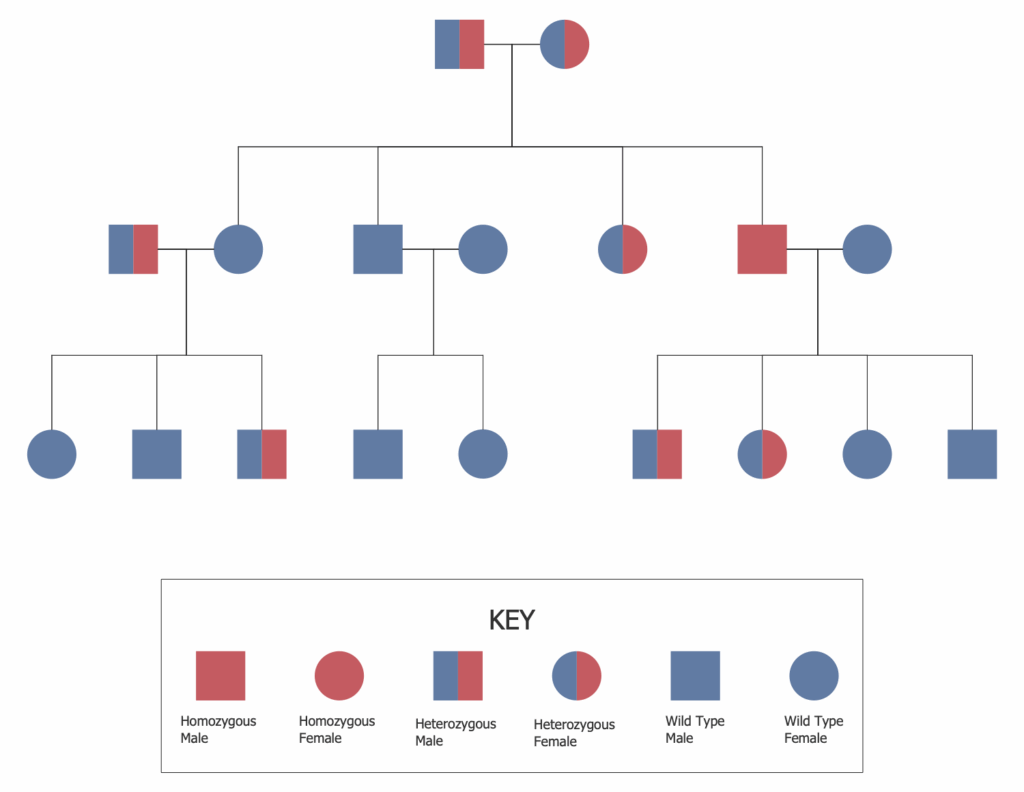An autosomal recessive pedigree chart is a visual representation of how a specific genetic trait or disorder is passed down through generations within a family. This type of chart is used to track the inheritance pattern of a recessive allele on an autosome, which is a non-sex chromosome. In an autosomal recessive pedigree chart, individuals who carry two copies of the recessive allele will exhibit the trait or disorder, while those who carry only one copy are considered carriers.
Each individual in the pedigree chart is represented by a symbol, with different symbols used to denote males, females, carriers, and affected individuals. The chart typically includes information about the genotypes of each individual, allowing for a clear visualization of how the recessive trait is inherited within the family.
Autosomal Recessive Pedigree Chart With Genotypes
Understanding Genotypes in Autosomal Recessive Pedigree Charts
In autosomal recessive pedigree charts, genotypes play a crucial role in determining whether an individual will exhibit a specific trait or disorder. The genotype of an individual refers to the genetic makeup of that individual, particularly in terms of the alleles they carry for a specific gene. For autosomal recessive traits, individuals must inherit two copies of the recessive allele to exhibit the trait.
Genotypes in autosomal recessive pedigree charts are typically represented using letters to denote different alleles. For example, if the recessive allele for a specific trait is represented by the letter “a,” individuals who are carriers would have the genotype “Aa,” while affected individuals would have the genotype “aa.” By tracking genotypes in the pedigree chart, it becomes easier to understand how the trait is passed down through generations and identify individuals who are at risk of passing on the trait to their offspring.
Creating an Autosomal Recessive Pedigree Chart with Genotypes
To create an autosomal recessive pedigree chart with genotypes, start by gathering information about the trait or disorder being studied and its inheritance pattern. Identify affected individuals within the family and determine their genotypes based on the known alleles for the trait. Use different symbols to represent males, females, carriers, and affected individuals in the chart.
Next, map out the relationships between individuals in the family and connect them with lines to show how the trait is inherited through generations. Label each individual with their genotype to provide a clear visual representation of how the recessive allele is passed down. By creating a detailed autosomal recessive pedigree chart with genotypes, researchers and healthcare professionals can better understand the inheritance pattern of the trait and provide targeted genetic counseling to at-risk individuals.
Download Autosomal Recessive Pedigree Chart With Genotypes
Autosomal Pedigree Chart
Autosomal Dominant Inheritance Pedigree Chart
Autosomal Recessive Inheritance GeeksforGeeks
Family Tree Solution ConceptDraw
